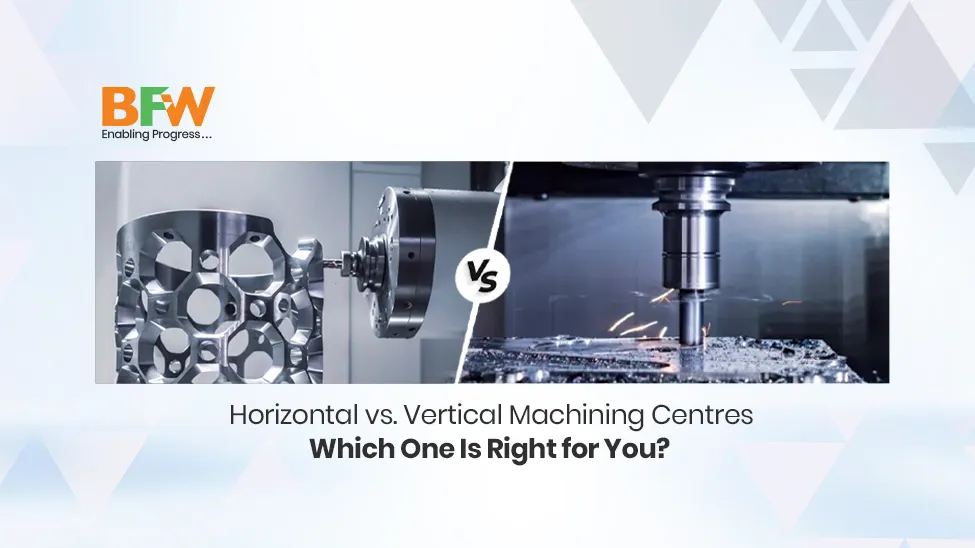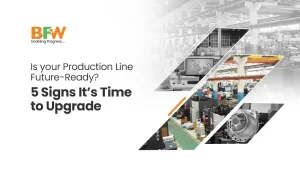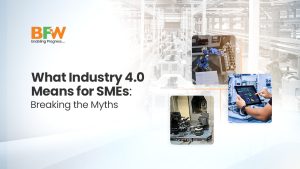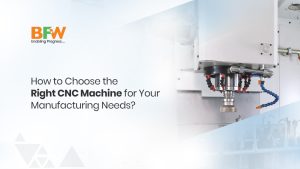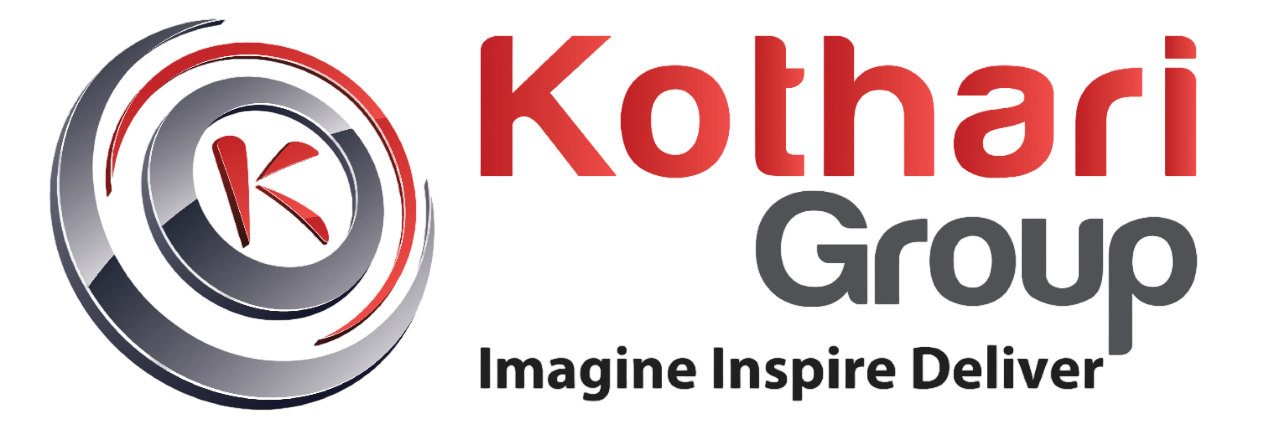Choosing between a Horizontal Machining Centre (HMC) and a Vertical Machining Centre (VMC) is a pivotal decision for manufacturers aiming to optimize their production processes. This guide delves into the key differences between HMCs and VMCs, focusing on aspects like setup efficiency, productivity, space utilization, and suitability for complex parts. By understanding these factors, manufacturers can make informed choices that align with their specific production needs.
Understanding the Basics
Vertical Machining Centres (VMCs):
In VMCs, the spindle axis is oriented vertically, allowing for precise machining of parts with complex features. They are particularly effective for tasks that require detailed work on a single surface that’s why VMC’S are more popular in plate type component. VMC’S are simple machine hence very popular for entry level industries
Horizontal Machining Centres (HMCs):
HMCs feature a horizontally oriented spindle with an indexing table, enabling multi-face machining. This design is advantageous for parts that require operations on multiple sides, reducing the need for repositioning and enhancing efficiency. Relatively costlier than VMC’S
Setup and Productivity
VMCs:
- Setup Efficiency: Ideal for small to medium-sized parts with simpler geometries. Quick setup times make them suitable for low to medium-volume production. (Plat type component, meant for only one type of component) Simple and just enough Machine.
- Productivity: High-speed spindles and advanced control systems contribute to rapid machining cycles, enhancing overall productivity.
HMCs:
- Setup Efficiency: Designed for high-volume production, HMCs excel in scenarios requiring minimal setup changes. Their ability to machine multiple faces in a single setup reduces downtime. (Non-standard)
- Productivity: The integration of pallet changers and multi-axis capabilities allows for continuous machining, significantly boosting productivity, especially in large-scale operations.
Space Utilization
VMCs:
- Footprint: Compact design makes VMCs suitable for workshops with limited floor space.
- Flexibility: Their smaller size allows for easier integration into existing production lines without significant reconfiguration.
HMCs:
- Footprint: Larger in size due to additional components like rotary tables and pallet changers.
- Space Efficiency: While occupying more space, HMCs can replace multiple machines, potentially saving space in the long run by consolidating operations.
Handling Part Complexity
VMCs:
- Best Suited For: Parts with intricate features that require precise machining on a single surface. Ideal for small scale industries..
HMCs:
- Best Suited For: Complex parts with multiple faces that need machining. Common in the automotive sector, where parts require machining on different faces
| Feature | VMC | HMC |
| Spindle Orientation | Vertical | Horizontal |
| Setup Time | Short | Longer due to complexity |
| Productivity | High for simple parts | High for complex, multi-face parts |
| Space Requirement | Compact | Larger |
| Part Complexity | Suitable for simpler geometries | Handles complex, multi-sided parts |
Making the Right Choice
The decision between a VMC and an HMC hinges on several factors:
- Production Volume: High-volume, repetitive tasks may benefit from the efficiency of HMCs, while VMCs are suitable for smaller batches.
- Part Complexity: Complex parts with multiple machining faces are better suited for HMCs, whereas simpler parts can be efficiently handled by VMCs.
- Space and Budget Constraints: VMCs are more compact and cost-effective, making them ideal for workshops with limited space and budget.
Need Assistance?
Choosing the right machining centre is crucial for your business’s success. If you’re uncertain about which machine aligns with your production goals, our team at BFW is here to assist you. Contact us today!

